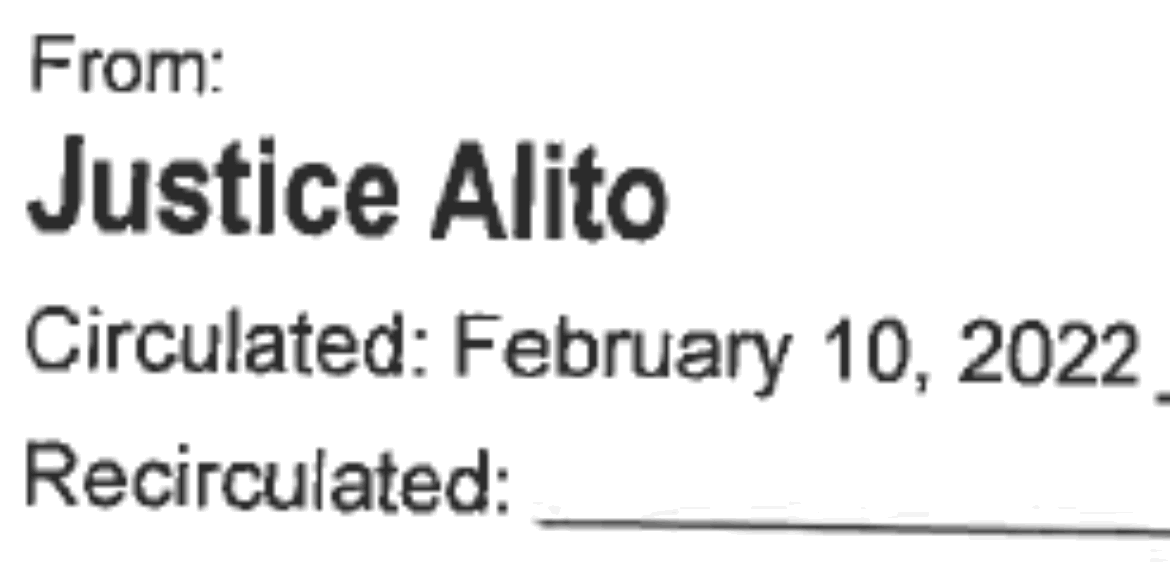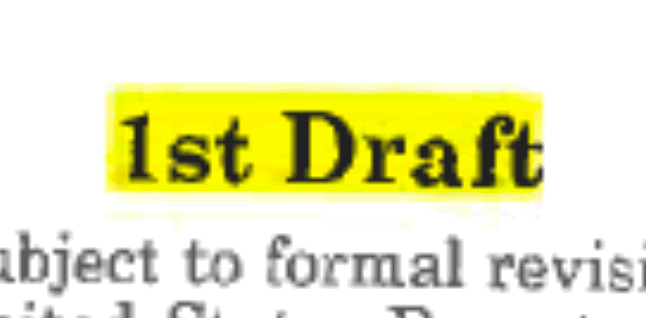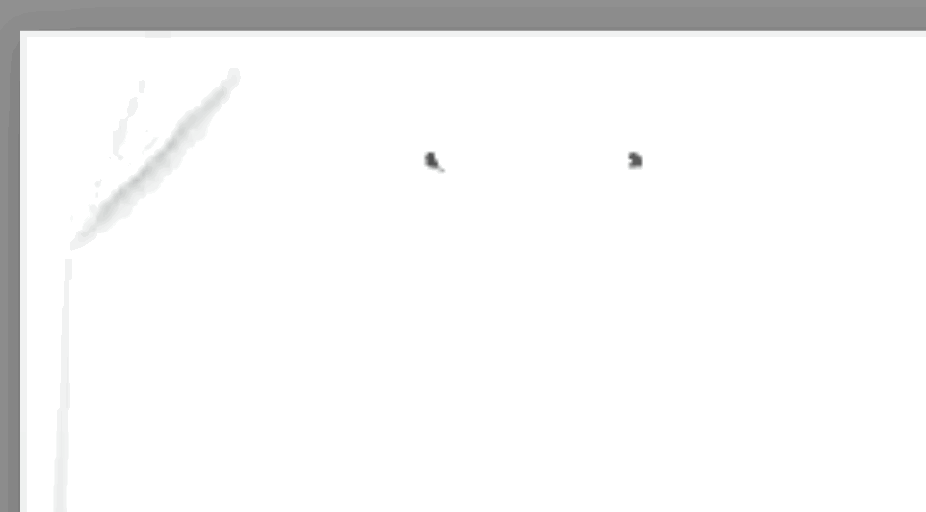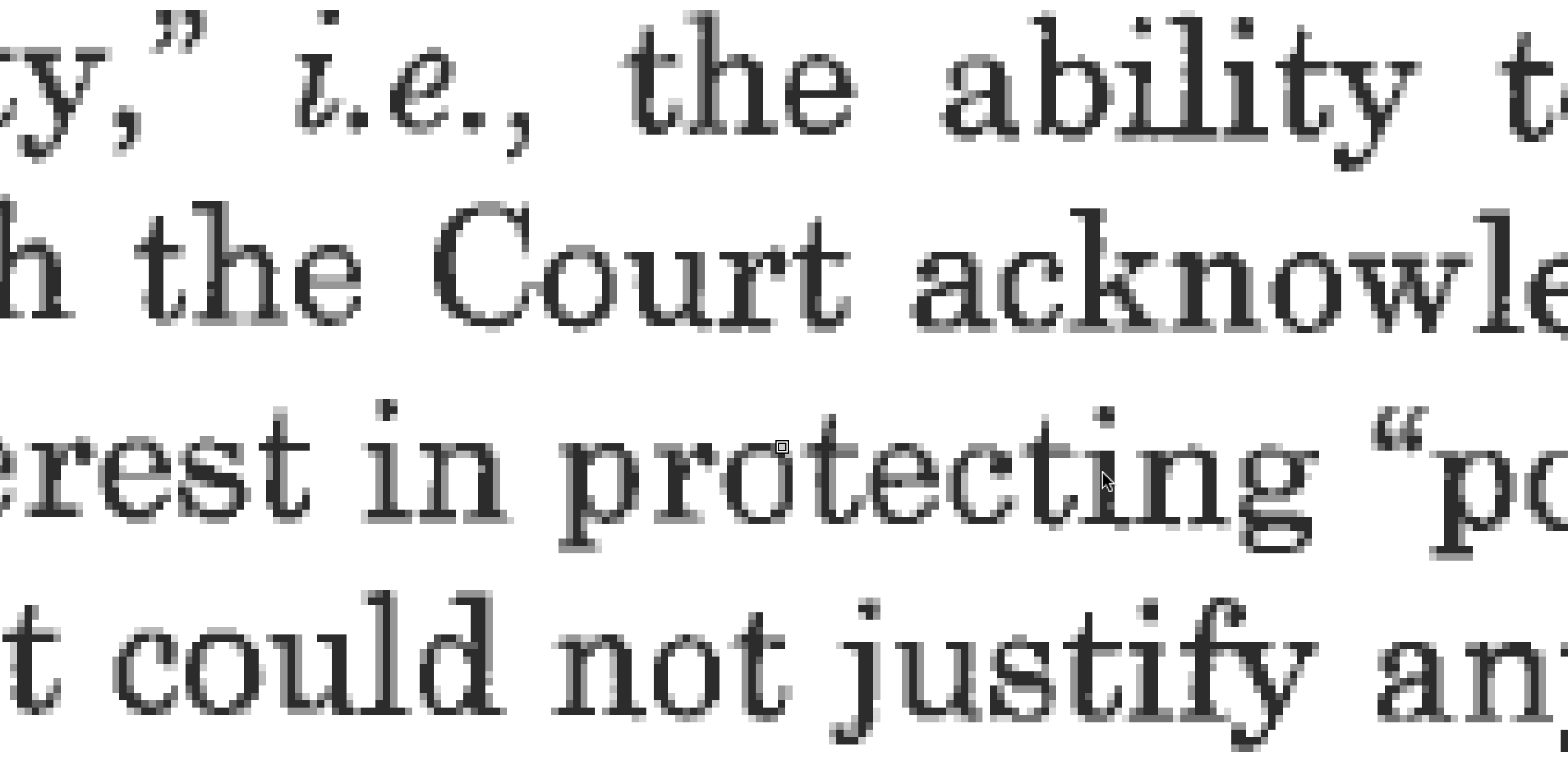What we can deduce from a leaked PDF
In 1979, Bob Woodward and Scott Armstrong published The Brethren, a chronicle of the Supreme Court during the tumultuous and consequential terms from 1969 to 1975. Including, of course, the deliberations around Roe v. Wade. I’ve recommended the book before—it’s my favorite work of legal journalism.
At the time, The Brethren was controversial. Despite the Supreme Court’s longstanding policy of secrecy around internal deliberations, it was apparent that sources within the court had spoken to Woodward and Armstrong off the record. After the death of Justice Potter Stewart in 1985, Woodward confirmed that Stewart had been one of his key sources.
Thus, the bad news for those who contend that the recent leak of a draft Supreme Court opinion is “unthinkable” or, in the words of Chief Justice John Roberts, a “singular and egregious breach”—the horse is long out of the barn. Indeed, with so many more ways to securely leak information these days, the only surprise in recent years is that there haven’t been more.
Much as I enjoy Woodward’s writing, his sources are not necessarily well concealed. One just needs to ask: “which person in this story takes the fewest hits?” For instance, in Woodward’s earlier book about the Trump administration, Fear, this line of thinking led inexorably to former White House economic adviser Gary Cohn.
Cohn publicly questioned the accuracy of the book. Tellingly, he didn’t specify any particular fact it had gotten wrong. In general, when sources deny journalistic reporting, I trust the journalists, because there are still serious legal consequences for news organizations that publish falsehoods; meanwhile, no consequences at all for sources who issue blanket denials.
(This dynamic isn’t limited to political reporting. In 2018, Bloomberg Businessweek published a story called “The Big Hack” that was vigorously denied by Apple and Amazon. Based on these denials, certain tech bloggers became convinced that the story was false. The fact that neither Apple nor Amazon sued Bloomberg for defamation—despite being extremely rich, finicky, and litigious—made nary a dent.)
To be fair, this exchange of favors is not unique to Woodward. Rather, it’s a longstanding feature—or bug, some might say—of Washington political journalism. Much of the operation of government is committed to the public record. But much more is not. Thus, leaks become currency, traded constantly. Without them, there would be no national political news.
So when you hear the caterwauling—“egad, the leakers!”—assume it refers to the leaks that the caterwauler finds unflattering. Although disclosing actual classified information is a crime, much information about the government doesn’t fall into that category. In particular, it doesn’t appear that leaking a draft Supreme Court opinion breaks any law. So the hot-blooded idea that the leaker should be “prosecuted” is misplaced.
Not every leak is published, however. Over time, one of the reciprocal favors that Washington journalists have offered is to plug certain leaks rather than publicize them. For instance, during his first 10 years on the Supreme Court—including the time depicted in The Brethren—Justice William Rehnquist became addicted to Placidyl, a powerful sedative. Nevertheless, this fact was not mentioned in Woodward’s book, nor much other journalism of the time. As best I can tell, the Washington Post didn’t explicitly connect Rehnquist to Placidyl until after he had completed a detox program in early 1982. (Current Chief Justice John Roberts clerked for Rehnquist during the 1980–81 term.)
Bringing us to this week’s leak by Politico of a draft Supreme Court opinion in the case of Dobbs v. Jackson Women’s Health Organization. I don’t usually comment on current events. But the possibilities for typographic forensics were too intriguing to ignore.
Consistent with the Washington journalistic principle of leaks-for-favors, I infer that whoever leaked this draft must foresee a benefit from the leak—as usual, cui bono?
Therefore, I don’t think the source is someone who works at the Supreme Court, like a justice or a clerk. Justices understand that they don’t always end up in the majority. Clerks rely on these jobs as a calling card for the rest of their careers. To be exposed as a leaker would amount to setting that future career on fire. It’s not worth the risk.
Though I’m not going to delve into the substance of this draft opinion, I believe it’s much more likely that the leaker is someone who supports the opinion rather than an opponent—
The opinion is marked “1st draft” and dated February 10. In the intervening months, there are only three options: either a) the majority bloc in favor of the opinion has held together, or b) it has drifted apart, or c) there never was a majority.
If (a) is true—the majority bloc has held—there’s no reason for a supporter or an opponent to leak an old draft now. The final opinion is likely to be released within six weeks. Leaking this document changes nothing.
But if (b) is true—the majority bloc has experienced defections or eroded subsequent drafts of the opinion—it’s a different story.
In that case, an opponent of the opinion has no reason to leak it, because to them, the tides are already shifting in the right direction.
But a supporter of the opinion would have an incentive to leak an earlier opinion and thereby pressure the defectors back toward the first draft. (Again: this reasoning has nothing to do with the substance of the opinion. It is just the most likely tactical logic.)
Option (c)—there never was a majority—may seem curious, since most of the press coverage so far has assumed otherwise. The document claims to be the “opinion of the Court”, right? True, but it’s a first draft. For all we know, the justices who initially expected to be in the majority saw this draft and declined to adopt it.
In this case, however, the tactical outcome would be the same as case (b)—the leak would benefit whoever wants to restore a coalition around this version of the opinion.
So what can we tell from the document itself?
For thoroughness, I ran the PDF through some metadata checkers to see if there were any interesting tidbits left behind. There weren’t. Though I didn’t expect to find any, based on the appearance of the document.
How was it created? Let’s go in steps:
An original color PDF was created on a computer using the US Supreme Court’s usual typesetting software. (And what is that? Programmer Faiz Surani noticed (perhaps unintentional) references in the Supreme Court Style Guide to a tool called “Opinions 2003”, which he speculated is a custom version of Microsoft Word 2003 used by the clerks for drafting opinions. This sounds plausible. For the typesetting and layout, designer Dan Rhatigan noted that the Supreme Court once used (and likely still uses) an XML-based publishing system made by Miles 33, apparently called OASYS. I’ve seen theories elsewhere that LaTeX is involved—this wouldn’t surprise me either, because to my eye, the line breaking in Supreme Court opinions resembles that produced by the LaTeX algorithm.)
It seems that the PDF was created on a modern computer and not with a different device because of the use of Arial in the upper right corner of the first page.

It seems that the PDF was created in color because the yellow highlight around “1st Draft” is a rectangle that perfectly fits the text. Thus, the box must’ve been present in the digital file, and not, say, drawn by hand with a highlighting pen.

It seems the PDF was printed and stapled because of the presence of staple holes on the top left corner of each page. The opinion is 98 pages, so that must’ve been a pretty big staple.

It seems that the printed PDF was unstapled and then rescanned. Why? The resolution of the page itself is very coarse and uneven, which is a kind of typographic degradation characteristic of sheet scanners. Furthermore, the pages have been scanned at different angles, which indicates the use of a low-volume home-office device. A typical office scanner would have an automated sheet feeder that would keep the sheets in a more uniform vertical orientation.

The text of the PDF is searchable because OCR was run on the PDF after it was created. Perhaps by the leaker, but more likely by the recipient, Politico.
It’s possible that Politico received the printed document and made their own scan. If that were the case, however, I’d expect them to have better quality scanning equipment and produce a nicer PDF.
But Politico has a strong incentive to protect their source. By making their own scan from a paper original, they wouldn’t open themselves up to the disclosures of confidential information that have tripped up others. (That said, printed documents are not necessarily free of metadata, as Reality Winner found out the hard way.)
Is it possible the document was scanned twice—once by the leaker, once by the publisher? I don’t think so. If it had been, I’d expect to see more peculiar pixel-level artifacts and distortions.
So what does the state of the PDF tell us about the identity of the leaker?
I conclude it must be someone who only had access to a stapled, printed copy of the draft opinion. (If the person had access to the underlying digital file, they wouldn’t have printed & stapled it just to unstaple it.)
As explained above, I don’t think the leaker was an opponent of the opinion, because there would be no tactical value in doing so. Moreover, if the objective of the leak was indeed to reconsolidate support, then the leak didn’t come from someone whose support is wobbling.
Furthermore, notice also that the document is completely unmarked, so whoever owned this copy didn’t find anything to disagree with.
In sum—I’d suppose it’s a friend, spouse, or family member of a Supreme Court justice who has consistently opposed Roe v. Wade, acting with something between autonomy and plausible deniability.
Of course, I’m probably wrong. Best of luck to Chief Justice John Roberts on his investigation.
PS—should court deliberations be confidential? Or should justices be required to post drafts of opinions to the judicial equivalent of GitHub?
On the one hand, we can see the virtue of a certain kind of deliberative veil for written opinions: it allows the members of the Court to freely explore ideas and alternatives, some of which may be strange or unreasonable, on the way to a final result.
On the other hand, oral arguments are out in the open. Partly because we the public are interested in how the Supreme Court justices are framing the issues, and where they detect strengths and weaknesses in the parties’ arguments.
Oral arguments happen in real time, however. The justices’ questions are understood to be a tool for sharpening the presentation, not for revealing their own positions (though inferences are made anyhow).
Majority opinions, by contrast, represent the official output of the Court, and thus necessarily should evolve more slowly. The deliberative veil is a wise policy specifically because it promotes open-mindedness and flexibility among the justices while allowing for a high standard of output. (Most famously: the case where Chief Justice Roberts wrote both the majority and minority opinions.) Justices who had to put every draft in a public location would become more cautious.
Finally, as a typographer, I think the Supreme Court’s apparent habit of typesetting draft opinions as if they were final is bad policy. I’ve cited the Supreme Court’s typography as the best in the country. I still think so. But part of the reason the Supreme Court’s typography works so well is because it visually connects an opinion to a centuries-long tradition of deliberative thought. When that typography is applied to a draft opinion, it gives the ideas therein a gravitas and authority they haven’t yet earned. Perhaps the people within the Supreme Court aren’t affected by such supposedly cosmetic considerations. But I’m certain that if this leaked PDF didn’t look like a finished Supreme Court opinion—say, more like this—the public reception would’ve been quite different.
update, 82 days later
As for government using GitHub, US senators Cynthia Lummis and Kirsten Gillibrand recently put a draft of their proposed cryptocurrency legislation on GitHub for public comment. This is the first time legislation has been presented in this manner, and it’s going the way you would expect, with suggestions like “add mario from mario 64”.
update, 198 days later
The New York Times reports that Rev. Rob Schenck claims he learned the outcome of a 2014 abortion-related opinion, Burwell v. Hobby Lobby, three weeks before it was released. That opinion was also written by Justice Alito:
In early June 2014, an Ohio couple who were Mr. Schenck’s star donors shared a meal with Justice Alito and his wife, Martha-Ann. A day later, Gayle Wright, one of the pair, contacted Mr. Schenck, according to an email reviewed by The Times. “Rob, if you want some interesting news please call. No emails,” she wrote.
Let’s compare that to my prediction for how the Dobbs leak was accomplished:
I’d suppose it’s a friend, spouse, or family member of a Supreme Court justice who has consistently opposed Roe v. Wade, acting with something between autonomy and plausible deniability.
For his part, Justice Alito issued a denial to the NY Times:
[The] allegation that the Wrights were told the outcome of the decision in the Hobby Lobby case, or the authorship of the opinion of the Court, by me or my wife, is completely false.
Unfortunately, this is the kind of denial that raises more questions than it answers due to the deliberately narrow phrase “were told”. The denial would remain true even if, say, Ms. Alito had put a copy of the draft opinion on the table, allowed Ms. Wright to look it over, and then taken it back—no “telling”, just showing.
To be clear—if my hypothesis turns out to be correct, it will be one of the worst days ever for the Supreme Court and federal judiciary, and a terrible day for the United States. Though I followed the evidence where it led, I still would’ve preferred to be wrong.
update, 259 days later
The New York Times reports that the Supreme Court interviewed 97 employees and found no evidence that any had leaked the draft opinion. Though the article also notes that this investigation of “employees” did not include the justices or their spouses. Mission accomplished? (The full Supreme Court report is here.)
update, 260 days later
In response to the welter of thinking-face emojis that were emitted in response to yesterday’s news that the interrogated “employees” did not include justices or their spouses, Supreme Court Marshal Gail Curley clarified that she “spoke with each of the Justices” but that none of the “credible leads … implicated the Justices or their spouses” and thus she did not “ask the Justices to sign sworn affidavits.” Makes perfect sense?
update, 262 days later
Another well-reported New York Times piece on the shortcomings and snowballing consequences of the Supreme Court’s leak investigation. This is fine?